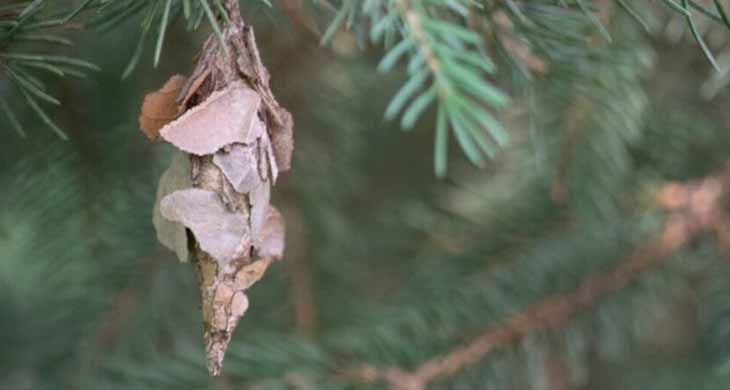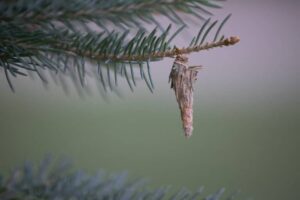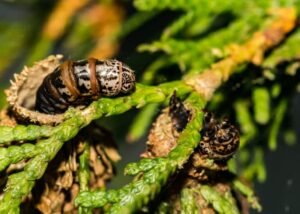If you see these hanging from you tree, you need to know what it means

Unveiling the Threat of Evergreen Bagworms: The Silent Tree Killers
The name “Evergreen Bagworm” might sound harmless, but these creatures can wreak havoc on trees, both deciduous and evergreen, causing substantial damage and, in some cases, even tree death if not effectively managed. Despite their misleading name, Evergreen Bagworms are not worms at all but moths in their larval stage.
Scientifically known as Thyridopteryx ephemeraeformis, Evergreen Bagworms are named for their unique protective casings, which they construct around themselves, resembling bags. These casings are more than mere fashion statements; they serve as camouflage and shelter.

The larvae create these protective bags by producing a silk-like thread and attaching debris like twigs and leaves to their bodies. Over time, these casings grow in size, providing a disguise for the worms. The reproductive cycle begins when the female adult lays eggs inside her casing, which remains attached to the tree after her death. Throughout the winter, these eggs remain in the casing, hatching in late spring or early summer, giving birth to small larvae. These young larvae embark on a quest to find a suitable tree to attach themselves to and start crafting their own bags using silk-like threads.
While they begin small, these bags expand as the larvae grow. They intermittently emerge from their casings to gather more plant material for their protective homes, creating new bags as they advance through each developmental stage. Within a span of two weeks, the larvae emerge from their casings as adult moths, with the males flying off to search for females to mate with.

Despite their unassuming appearance, Evergreen Bagworms can inflict substantial harm on trees. They target the foliage, hindering nutrient production and weakening the tree. This makes the tree susceptible to other illnesses, which can eventually lead to its death.
To safeguard your trees from the damage caused by Evergreen Bagworms, several measures can be taken:
Manual Removal: Handpick the bagworms.
Pruning: Prune affected branches to remove the infestation.
Natural Predators: Encourage natural predators like birds and parasitic wasps in your garden.
Chemical Control: Use insecticides specially formulated for bagworms to control the infestation.
Prevention is equally important. Implement these strategies to deter Evergreen Bagworm infestations:
Regular Inspection: Regularly inspect trees, especially during spring and summer when the larvae hatch, to detect bagworms early.
Tree Maintenance: Keep trees healthy by pruning and ensuring they receive proper nutrients.
Spacing: Maintain proper spacing between trees to reduce the risk of bagworm infestation.
Monitoring: Keep an eye on neighboring trees and plants, as bagworms can migrate from one tree to another.
In conclusion, Evergreen Bagworms may not be immediately obvious or appear dangerous, but they can cause significant destruction. It’s essential to be aware of the potential damage they can inflict and regularly monitor and maintain your trees and plants to keep them healthy and thriving.




